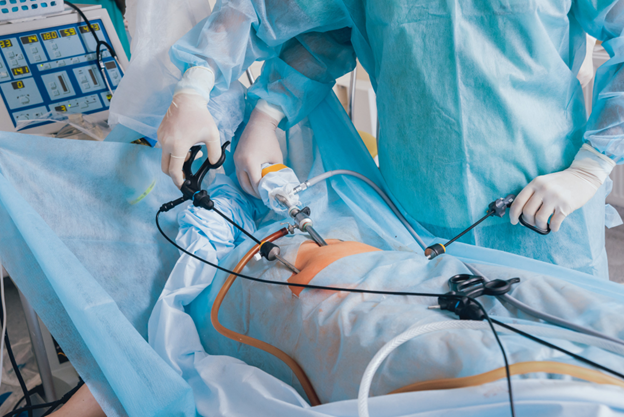Laparoscopic cholecystectomy is a modern surgical method to remove the gallbladder. The procedure is widely used for treating gallstones, which can cause pain and infection. Gallstones are small, hard deposits that can form in the gallbladder, and the surgery safely removes these deposits, reducing health risks. This overview aims to provide readers with essential information about the procedure and its differences from traditional methods, enhancing understanding and setting clear expectations for patients considering this surgery.
Introduction to Gallbladder Health and Common Issues
The gallbladder is a small organ located under the liver. It helps in digesting food by storing bile, a digestive fluid produced by the liver. Sometimes, issues arise with the gallbladder, like gallstones, which are painful and can lead to infections. Other problems may include inflammation or blockages. Understanding the role and common problems associated with the gallbladder helps in making informed health decisions, as awareness of these issues can lead to timely treatment and better management of symptoms.
Understanding Laparoscopic Cholecystectomy
This procedure involves removing the gallbladder using small cuts and tools. Laparoscopic cholecystectomy procedure is less invasive than open surgery, where a larger cut is made. Patients usually prefer the laparoscopic method due to less pain and quicker recovery times. While an open cholecystectomy offers a more traditional approach, the laparoscopic method provides advantages that align with modern surgical practices focusing on minimal distress.
Benefits of Choosing Laparoscopic Cholecystectomy Over Traditional Surgery Methods
Choosing a minimally invasive laparoscopic cholecystectomy offers many advantages:
- Quicker Recovery: Patients often heal faster, getting back to daily activities sooner.
- Less Post-Operative Pain: The smaller cuts used in this procedure cause less discomfort after surgery compared to large incisions.
- Reduced Risk of Infections: Smaller wounds are less likely to catch infections.
- Minimal Scarring: Surgical scars are less noticeable and heal with time.
These benefits make it a popular choice over traditional surgery, especially for those looking to minimize their downtime.
Preparing for Surgery: What to Expect Before, During, and After a Laparoscopic Cholecystectomy
Preparation is important for a smooth laparoscopic cholecystectomy recovery. Here’s what to expect:
- Before Surgery: Doctors may suggest dietary changes and conduct medical tests to ensure patient readiness. Avoid certain medications, and follow the surgeon’s guidelines to get ready.
- During Surgery: The procedure takes about an hour. Small incisions are made, and the gallbladder is removed using special tools.
- After Surgery: Rest is vital. Follow the surgeon’s advice on managing discomfort. A mild laparoscopic cholecystectomy diet can help in easy digestion and promote healing during the recovery period.
Understanding these steps can ease worries and help patients prepare better for the procedure.
Decoding the Process: Step-by-Step Explanation of the Laparoscopic Cholecystectomy Procedure
The procedure is quite straightforward: 1. Initial Preparation: The patient receives anesthesia to ease pain and discomfort. 2. Making Incisions: Surgeons make small cuts near the belly button to insert a camera and instruments. 3. Removing the Gallbladder: The camera helps locate the gallbladder, which is then carefully removed. 4. Closure: Small stitches or clips are used to close the cuts.
Imagining this step-by-step can help demystify the surgery and reduce patient anxiety.
Laparoscopic Cholecystectomy vs. Open Surgery: Examining the Differences and Advantages
A key difference lies in the incision size and recovery: – Laparoscopic Surgery: Uses smaller cuts, resulting in less pain and faster recovery. – Open Surgery: Involves a larger cut, leading to longer healing and more potential scarring.
Patients typically report fewer post-surgery complications with laparoscopic cholecystectomy, making it a preferable choice for many facing gallbladder issues.
Post-Surgery Recovery: Tips, Diet, and Exercises for Smooth Rehabilitation
Here are some tips for a smooth laparoscopic cholecystectomy recovery:
- Rest Well: Ensure plenty of rest in the first few days post-surgery.
- Follow a Good Diet: Your laparoscopic cholecystectomy diet should include easy-to-digest foods like soups, and avoid spicy or fatty foods.
- Light Exercises: Engage in gentle walking to promote healing and prevent blood clots.
- Stay Hydrated: Drink plenty of water to help your body flush out medicines used during surgery.
- Listen to Your Body: If anything feels off, don’t hesitate to consult your doctor.
These steps will facilitate better healing and help patients return quickly to normal routines.
Potential Complications: What Patients Should Know
While laparoscopic cholecystectomy complications are rare, it’s good to be aware:
- Possible risks include infections, bleeding, or bile leaks.
- Patients should watch for fever, severe pain, or yellowing of the skin.
- Seek medical help immediately if these symptoms occur to ensure timely intervention.
Being informed about complications aids in quick decision-making and seeking proper care.
Conclusion
Laparoscopic cholecystectomy offers an effective solution for gallstone problems with advanced techniques. Patients can benefit from technological advancements, leading to efficient and pain-free treatment. This surgery promotes fast recovery and enhances overall patient health.

